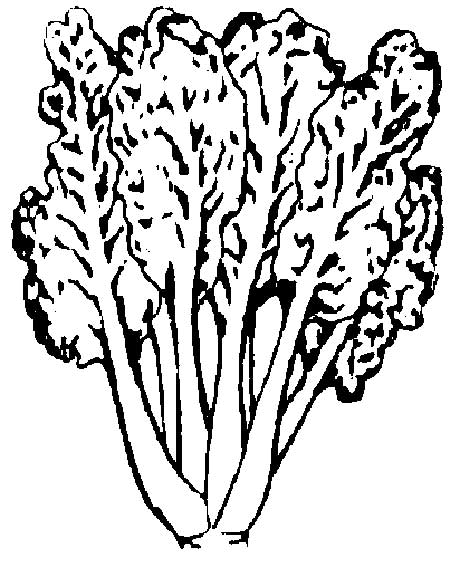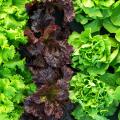Chard, Swiss
Swiss Chard

Swiss chard is a close relative of the garden beet that does not develop an edible root. Grow chard just like beets, but space the plants 4 to 6 inches apart in the row.
Harvest chard by cutting the entire plant or by removing the large outer leaves, leaving the smaller leaves to develop for future harvests. If watered, spring-planted chard may survive the summer to produce leaves for fall harvest. The green portion of the leaf can be stripped off, leaving the broad mid-rib, which can be steamed and eaten like asparagus.
There are several varieties of chard; the biggest difference among them is that some varieties have brightly colored stems. The red-stemmed varieties may be mistaken for rhubarb but cannot be used as a rhubarb substitute.
Because of its upright growth and large, attractive leaves, chard can be used as an ornamental in borders and display beds.
Varieties
- Bright Lights—red, yellow, purple, and green petioles.
- Lucullus—early; leaves crumpled; dark green; broad, pale-green petiole.
- Rhubarb—crimson stalks; leaves dark green; heavily crumpled.
Publications
News
Did you know yellow squash is in the pumpkin family and are 95 percent water?
Tomatoes are a popular crop, both for commercial growers and home gardeners. Even the best tomato growers run into problems along the way! We put together a simple, easy-to-follow guide to help you spot a few of the most common tomato troubles gardeners see.
Did you know lettuce was one of the first vegetables brought to America by Christopher Columbus? What a great fun fact!




